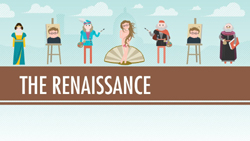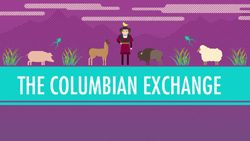| The ideas of the Enlightenment had clearly made an impact
on the colonies in North America. In response to unfair taxation
and other issues, the colonists revolted against British rule, formed their
own army, and declared their independence. Many Europeans saw the
American Revolution as the embodiment of the Enlightenment’s political
dreams.
Britain & the American Revolution
-
Drawing on the theory of natural rights, the Declaration
of Independence declared the colonies to be independent of Britain.
The United Kingdom of Great Britain
The United Kingdom of Great Britain came into existence
in 1707, when the governments of England and Scotland were united.
By the end of the Seven Years' War in 1763, Great Britain
added to its thirteen various colonies in North America the territory they
had gained in Canada and Spanish Florida. The kingdom saw its colonies
as existing solely for the enrichment of the mother country.
Britain's 13 Colonies in America
Although ultimately ruled by Parliament, the British
American colonies had their own legislatures that tended to act independently.
The American Revolution Begins
After the Seven Years War, British leaders wanted new
revenue from the colonies.
In 1765 the British Parliament imposed the Stamp Act
on the colonies.
The Stamp Act required certain printed materials,
such as legal documents and newspapers, to carry a stamp certifying that
a tax had been to Britain.
Crying 'No taxation without representation!' opposition
to the new tax erupted.
The Act was repealed in 1766, but the damage was done.
The First Continental Congress met in Philadelphia,
in September 1774. Members urged colonists to "take up arms and organize
militias."
The Revolutionary War
Fighting erupted between colonists and British army in
April 1775 at Lexington & Concord, Massachusetts.
The Second Contiental Congress set up an army to
fight for the colonies they called the Continental Army. General
George Washington served as its Commander-in-Chief.
On July 4, 1776, the Second Continental Congress
approved the Declaration of Independence written by Thomas Jefferson.
This document declared that "these United Colonies are,
and of right ought to be, free and independent States, that they are absolved
from all allegiance to the British Crown, and that all political connection
between them and the State of Great Britain is, and ought to be, totally
dissolved."
The French supplied arms and money to the Americans, with
French officers serving in Washington's Continental Army.
In 1778, following a British defeat, France granted diplomatic
recognition to the new United States.
When Spain and the Dutch Republic entered the war on the
side of the Americans, the British realized they could be facing the threat
of another world war.
British Defeat
General Cornwallis was forced to surrender both
the French and American forces under General George Washington at Yorktown
in 1781.
When this happened, the British decided to end the war.
Independence Won
The Treaty of Paris, signed in 1783, recognized
the independence of the American colonies, as well as granted American
control of the western territory from the Appalachans to the Mississippi
River.
REVIEW & DO
NOW
Answer the following questions in your spiral notebooks: |
| What was the Stamp Act?
Why did the British Parliament impose the Stamp Act on
its American colonies?
Who served as Commander-in-Chief of the Continental Army
during the Revolutionary War? |
What was the Declaration of Independence?
Who wrote it?
When was it approved?
Who was the British General who surrendered at Yorktown.
What did the Treaty of Paris of 1783 do? |
|
|
The Birth of a New Nation
-
The formation of the United States of America convinced many
Eighteenth Century philosophes that a new age and a better world could
be created.
Following the Revolutionary War, the colonies did not want
to create the same sort of government they had just escaped.
The first American constitution was the Articles of
Confederation. It gave the national government too little power.
The Articles created a weak central government that did not have the power
to deal with national problems.
The Constitution
The United States Constitution created a federal system
in which the national government and the state governments shared power.
Based on the ideas of the Baron de Montesquieu, the federal
government was divided into three branches:
-
The Executive branch—the president, who enforces the
law;
-
The Legislative branch—the Congress, divided into
the House of Representatives and the Senate, which make the law; and
-
The Judicial branch—the court system, including the
Supreme Court, which interprets the law.
An example of checks and balances at work in the United States
government is that the president can veto, or reject, an act of Congress.
After ratification, or approval, by 9 of the 13 states,
on June 21, 1788, the Constitution took effect.
The Bill of Rights
The Bill of Rights was a set of ten amendments to the
United States Constitution. The amendments helped define the role
between citizens and the government and the limits of the federal government
in the lives of the people and of the individual states.
The Bill of Rights guaranteed such things as the freedom
of religion, the freedoms of speech and the press, the right to peaceably
assemble and to petition the government for redress of grievances.
It protected individuals from unlawful searches and seizure and from self-incrimination.
REVIEW & DO
NOW
Answer the following questions in your spiral notebooks: |
What was the first constitution of the United States?
Why did it not work?
What is a federal system?
Name and give the function of each branch of government. |
How many Houses is Congress divided into, and what are
they?
When did the Constitution take effect?
What is the Bill of Rights?
What does it do?
What are some of the guarantees and protections in the
Bill of Rights? |
|
|
|





